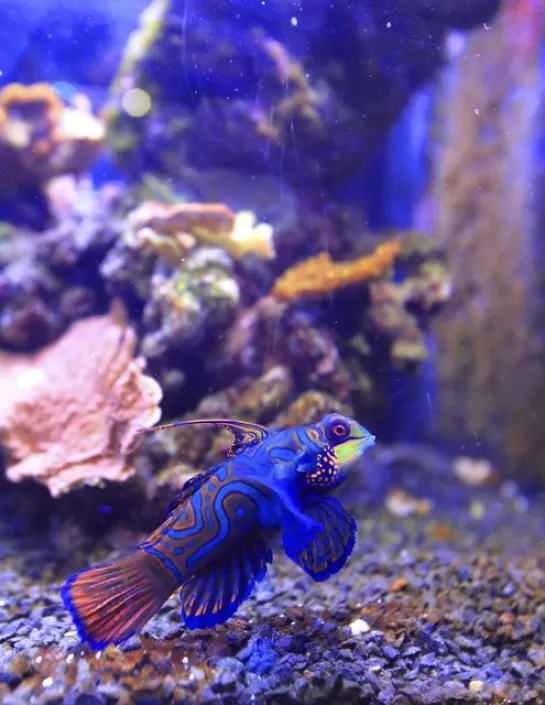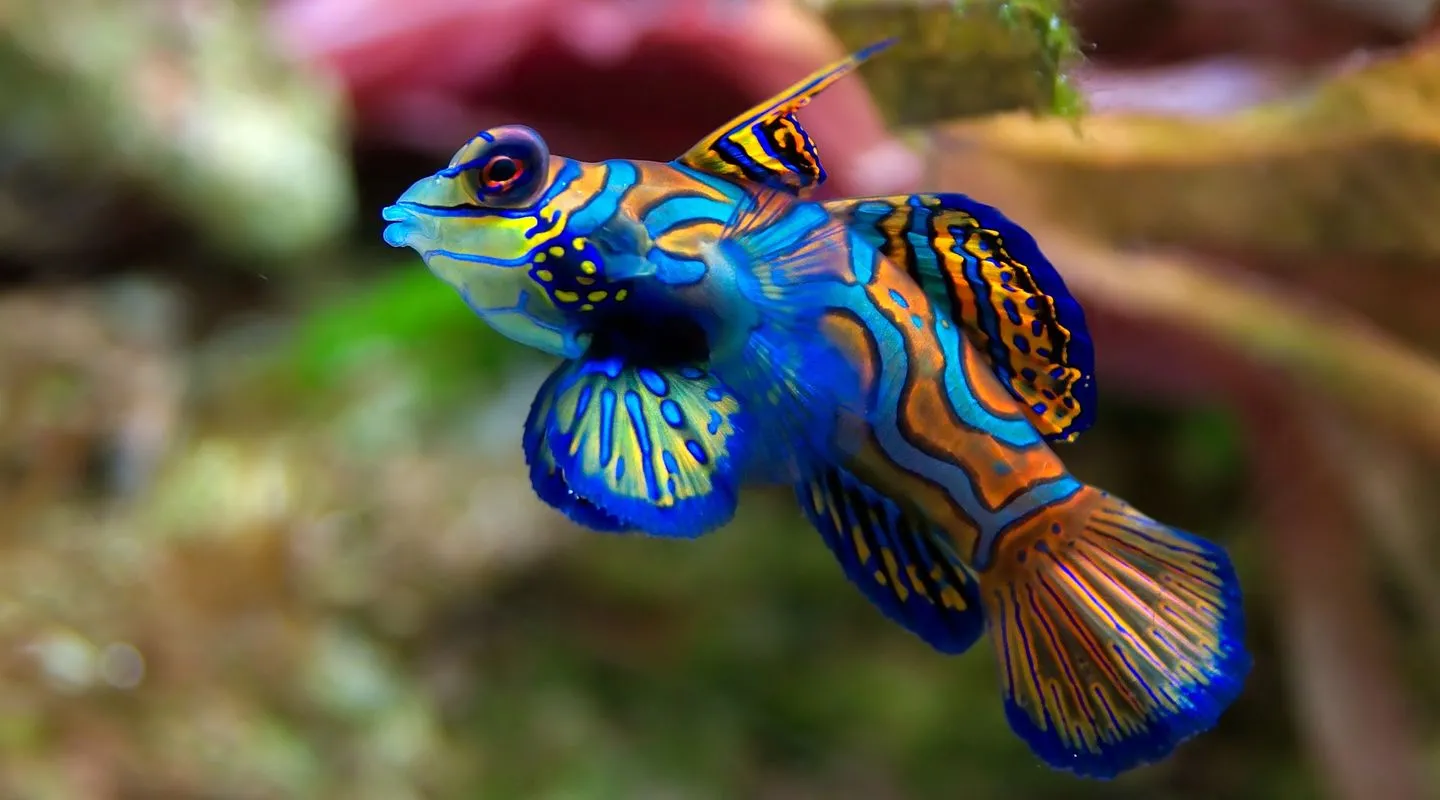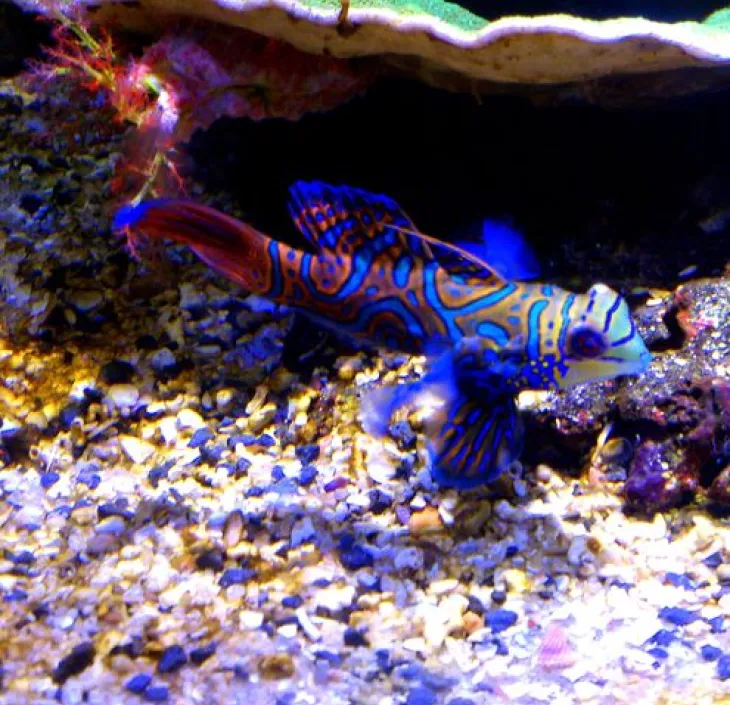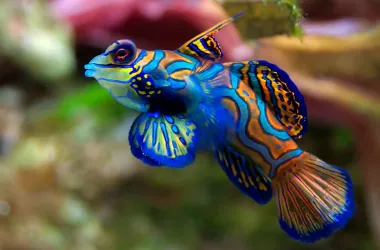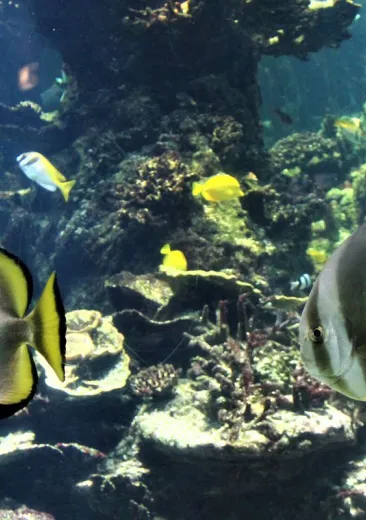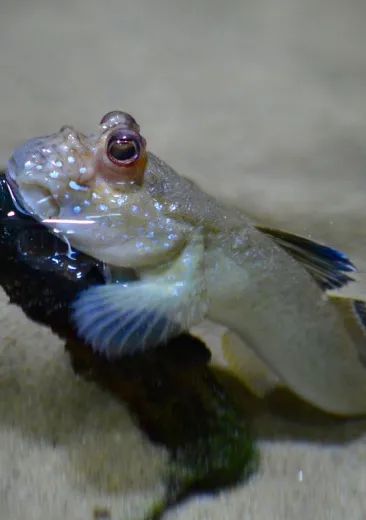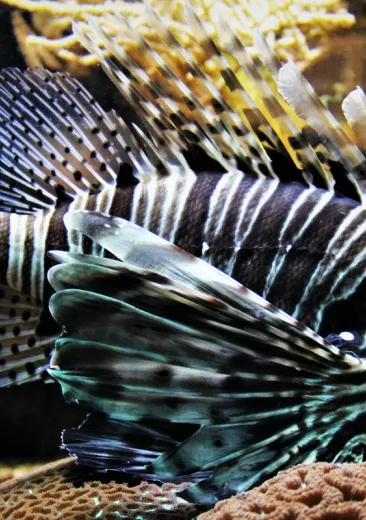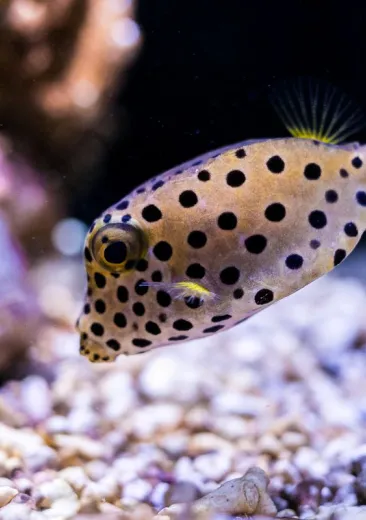Where is the animal to be found?
Rocky areas, along the coastline, lagoons, coral reefs or sheltered lagoons, down to a depth of 18 metres. It spends most of its time eating by pecking on corals. It does not swim in open water but stays close to spiny sea urchins and hard corals in which it hides.
It can be found at depths down to 18 metres in the rocky areas of tropical lagoons, in coral reefs or in sheltered lagoons. It can also be found along the coastline.
How can it be recognised?
The mandarinfish has a triangular head, large protruding eyes and prominent lips.
However, it is most recognisable for its bright colours. Its colourful coat has a brown or orange base and green and blue sinuous stripes. You can also see yellow patches. The patterns vary from one fish to another. According to observations, during the breeding season, males are more colourful than females.
Males can be distinguished from females by the first spine on their dorsal fin. It is twice as large in males as in females. When not erect, it is folded over the back of the mandarinfish and can reach its tail fin.
What is distinctive about it?
The skin of the mandarinfish does not have scales. It is covered with a thick mucus that protects it from bacteria.
It seems that this mucus acts as a repellent against its predators: it contains toxins. Furthermore, the intense colours often act as a warning to predators and indicate the toxicity of an animal...which keeps predators away.
